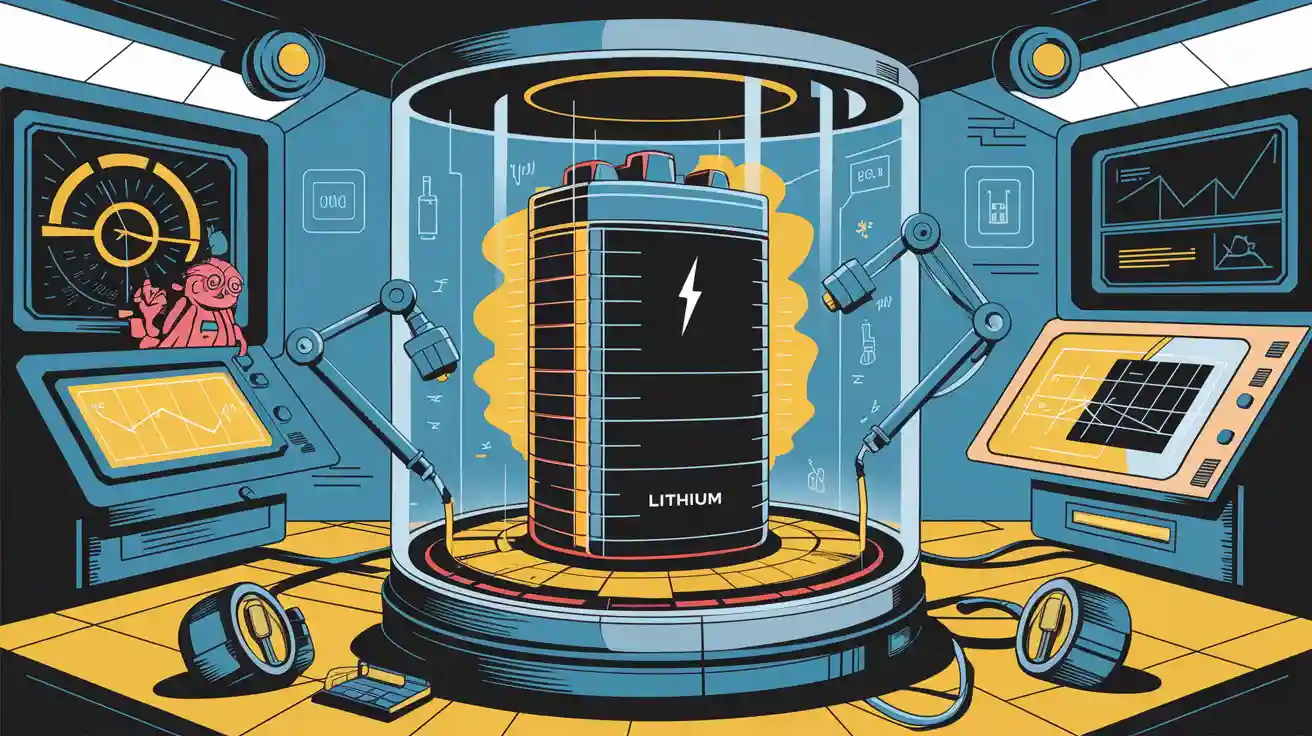Contents
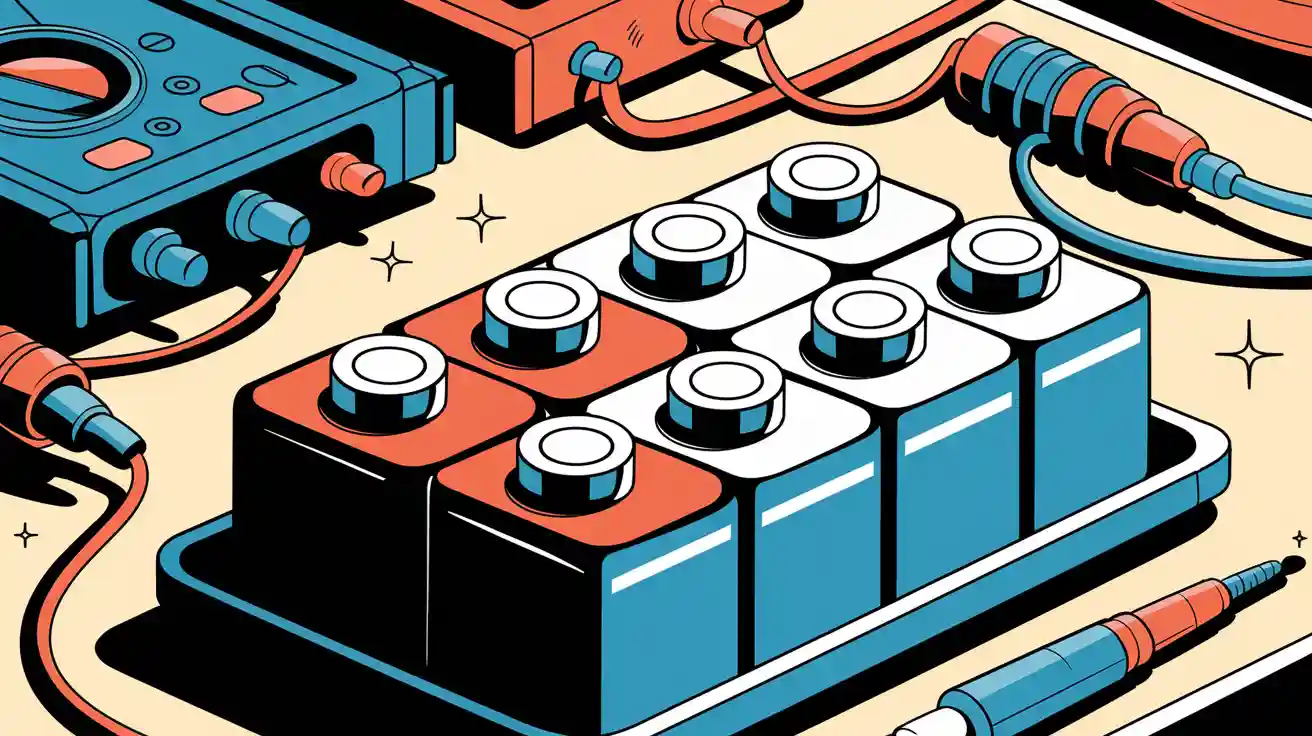
Cylindrical cells are a type of lithium-ion battery characterized by their cylindrical shape and robust metal casing. These cells play a key role in energy storage systems, offering high reliability and scalability. Industries such as electric vehicles and consumer electronics widely adopt these batteries. In 2023, the global cylindrical lithium battery market was valued at USD 39.02 billion and is projected to reach USD 61.04 billion by 2024. Their superior energy density and durability make them essential for powering modern devices and vehicles.
For customized battery solutions tailored to your needs, explore our offerings here.
Key Takeaways
Cylindrical cells store energy well and last a long time. They are great for electric cars and gadgets we use daily.
Standard sizes, like 18650 and 21700, make designing batteries easier. These sizes work for many industries and uses.
Cylindrical cells are built with safety in mind. Strong cases and pressure valves keep them working safely, even in tough situations.
Part 1: Key Features of Cylindrical Cells
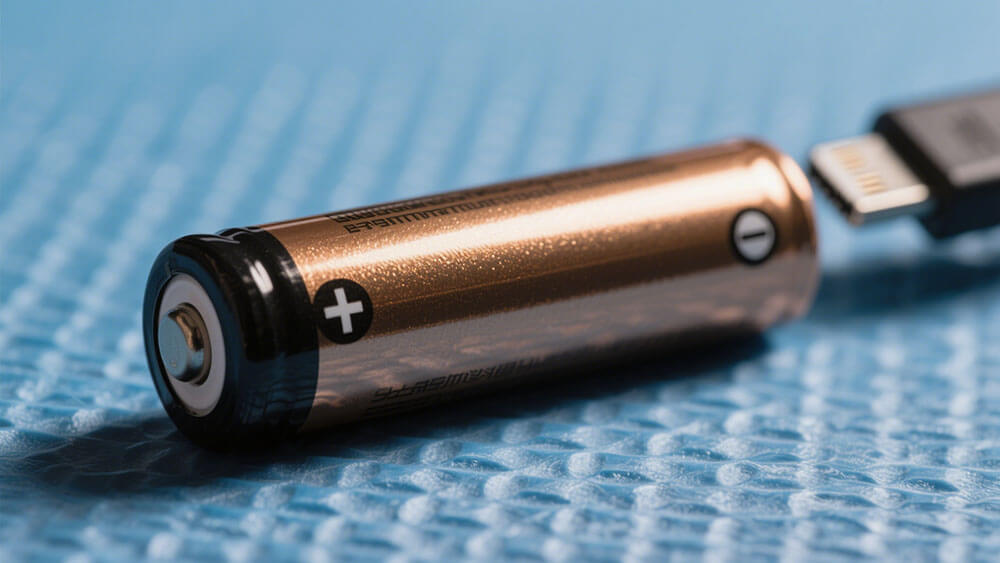
1.1 Structure and Design of Cylindrical Cells
Cylindrical cells are meticulously designed to ensure durability and efficiency. Their cylindrical shape, combined with a robust metal casing, provides excellent structural integrity, making them suitable for demanding applications like electric vehicles and energy storage systems. Inside, these cells consist of several key components:
Cathode (Positive Electrode): Typically made from materials like LCO, NMC, or LiFePO4, which influence the cell’s energy density and lifespan.
Anode (Negative Electrode): Often composed of graphite or silicon-based materials to enhance capacity.
Separator: A porous polyolefin membrane that prevents short circuits while allowing lithium ions to pass through.
Electrolyte: A solution of lithium salts in organic solvents, facilitating ion movement between electrodes.
Outer Casing: Constructed from steel or aluminum alloy to protect internal components and ensure safety.
The cylindrical design also aids in thermal management, as the uniform shape allows for even heat dissipation. This feature is critical for maintaining performance and extending the battery’s lifespan.
Note: The precision required in welding and handling during battery manufacturing ensures the reliability of cylindrical cells. Effective thermal management strategies further enhance their performance in high-energy applications.
1.2 Cylindrical Cell Naming Rules
The naming convention for cylindrical cells follows a standardized format that provides insight into their dimensions. For instance, the popular “18650” cell derives its name from its size:
18: Diameter of 18 millimeters.
65: Height of 65 millimeters.
0: Indicates a cylindrical shape.
Other common sizes include 21700 (21 mm × 70 mm) and 4680 (46 mm × 80 mm). These standardized dimensions simplify integration into battery packs, ensuring compatibility across various devices and industries.
1.3 Common Cylindrical Cell Types
Cylindrical cells come in various chemistries, each tailored to specific applications. Below is a table summarizing the most common types:
Type | Voltage Platform | Energy Density (Wh/kg) | Cycle Life (Cycles) | Applications |
|---|---|---|---|---|
LCO | 3.7V | 180–230 | 500–1,000 | Consumer electronics, medical devices |
NMC | 3.5–3.6V | 160–270 | 1,000–2,000 | Electric vehicles, industrial tools |
LiFePO4 | 3.2V | 100–180 | 2,000–5,000 | Energy storage systems, robotics |
LMO | 3.7V | 120–170 | 300–700 | Power tools, security systems |
Each type offers unique advantages. For example, LiFePO4 cells excel in safety and longevity, while NMC cells provide higher energy density, making them ideal for electric vehicles. The choice of chemistry depends on the specific requirements of the energy storage device or application.
Tip: When selecting a cylindrical cell, consider factors like energy density, cycle life, and thermal performance to ensure optimal results for your project.
For customized battery solutions tailored to your needs, explore our offerings.
Part 2: Pros and Cons of Cylindrical Cells
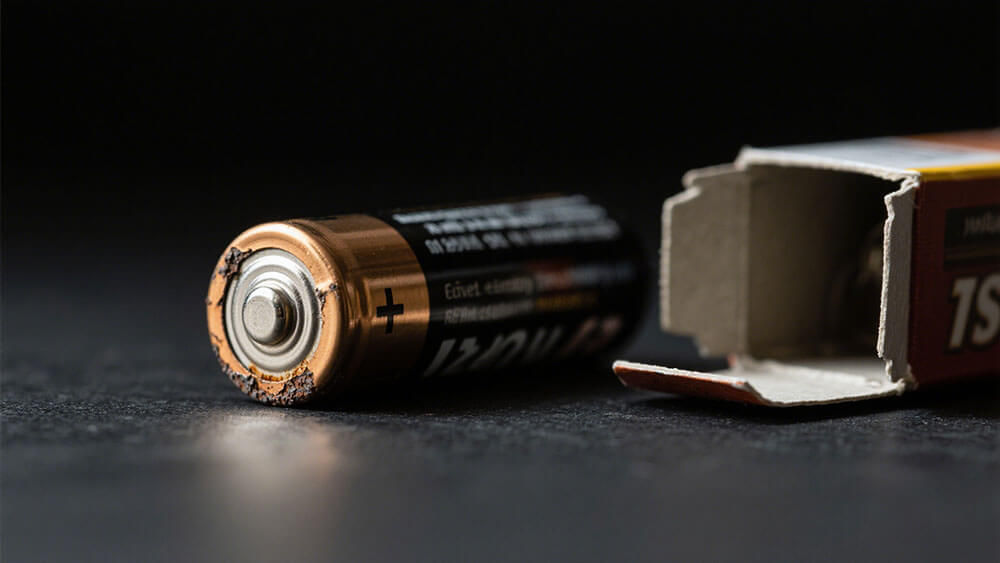
2.1 Advantages of Cylindrical Cells
Cylindrical cells offer a range of benefits that make them a preferred choice in energy storage systems and lithium-ion battery packs. Their design and performance characteristics provide significant advantages across various applications, including electric vehicles and consumer electronics.
High Energy Density: Cylindrical cells deliver impressive energy density, enabling compact battery packs with extended runtime. This feature is particularly valuable in electric vehicles, where maximizing energy storage is critical.
Scalability: The standardized sizes of cylindrical cells, such as 18650 and 21700, simplify the process of scaling battery packs for different energy requirements. This modularity supports diverse applications, from small consumer electronics to large industrial systems.
Efficient Heat Dissipation: The cylindrical shape promotes uniform heat distribution, reducing the risk of hotspots and enhancing thermal stability. This characteristic ensures reliable performance under demanding conditions.
Durability and Longevity: The robust metal casing of cylindrical cells provides excellent mechanical strength, protecting internal components from external shocks. Combined with advanced chemistries like LiFePO4, these cells achieve a longer lifespan, making them cost-effective over time.
Improved Charging and Discharging Rates: Cylindrical cells support faster charging and discharging cycles, which is essential for applications requiring high power output, such as robotics and industrial tools.
Tip: When designing battery systems, consider cylindrical cells for their durability and scalability. Their ability to withstand mechanical stress makes them ideal for high-performance applications.
2.2 Limitations of Cylindrical Cells
Despite their numerous advantages, cylindrical cells also have certain limitations that you should consider when selecting a battery solution. These drawbacks often depend on the specific application and design requirements.
Limited Design Flexibility: The rigid cylindrical shape can restrict design options, especially in applications requiring custom battery configurations.
Lower Packing Efficiency: Compared to prismatic or pouch cells, cylindrical cells leave more unused space when assembled into battery packs. This can reduce overall energy density at the system level.
Increased Manufacturing Complexity: The winding process used in cylindrical cells, particularly in larger formats like 21700, demands precise mechanical properties. This complexity can increase production costs and time.
Thermal Behavior Challenges: Under high testing currents, cylindrical cells may exhibit thermal resistance issues in current collectors. This can impact performance, especially in applications requiring sustained high power output.
Note: While cylindrical cells excel in many areas, their limitations highlight the importance of evaluating your specific application needs. For custom solutions tailored to your requirements, explore our offerings here.
Advantages | Weaknesses |
|---|---|
High energy density | Limited design flexibility |
Scalability | Lower energy density compared to some alternatives |
Efficient heat dissipation | Increased manufacturing complexity |
Improved charging and discharging rates | Increased risk of thermal runaway |
Durability | Lower packing efficiency |
2.3 Safety Features in Cylindrical Cells
Safety remains a top priority in battery design, and cylindrical cells incorporate multiple features to minimize risks. These mechanisms ensure reliable operation, even under challenging conditions.
Robust Outer Casing: The steel or aluminum alloy casing provides mechanical protection, reducing the likelihood of damage from external impacts.
Pressure Relief Valves: Cylindrical cells include built-in pressure relief mechanisms to prevent explosions in case of overpressure.
Callout: Cylindrical cells are designed with safety in mind, making them a reliable choice for applications requiring high energy density and durability. For more insights into sustainable battery solutions, visit our sustainability page.
Part 3: Cylindrical Cells in Comparison to Other Cell Types
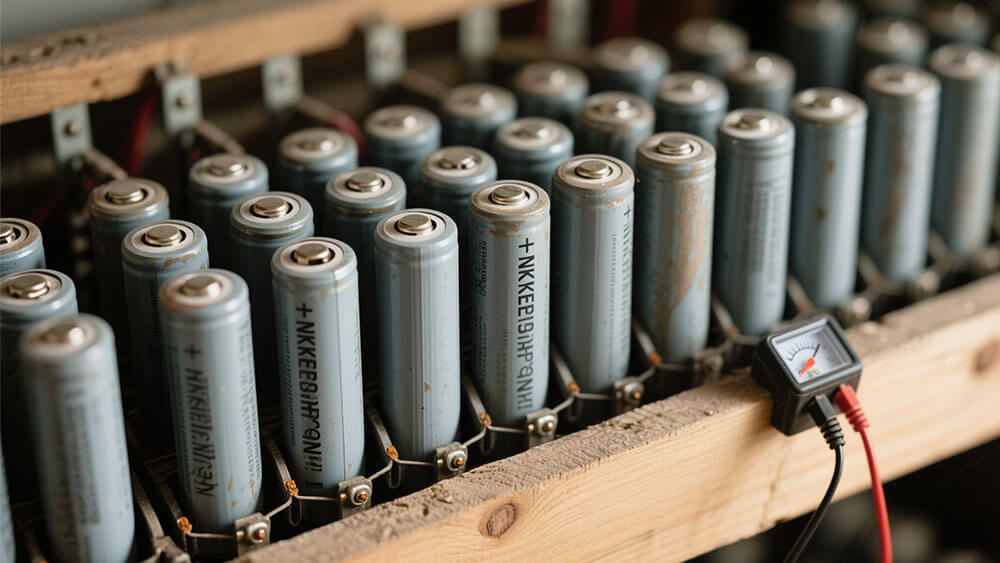
3.1 Cylindrical vs. Prismatic Cells
Cylindrical cells and prismatic cells differ significantly in design, performance, and application. Cylindrical cells feature a compact, standardized design, making them ideal for modular battery packs. Prismatic cells, on the other hand, offer higher energy density per unit, which suits applications requiring fewer cells.
Feature | Cylindrical Cells | Prismatic Cells |
|---|---|---|
Energy Storage | Lower energy per cell | Higher energy per cell (20–100 times) |
Discharge Rate | Faster discharge | Slower discharge |
Application | High-performance applications | Energy-efficient applications |
Size | Smaller, more versatile | Larger, fewer connections needed |
Manufacturing Defects | More connections increase defect risk | Fewer connections reduce defect risk |
Cylindrical cells excel in high-discharge applications like power tools and electric vehicles due to their durability and thermal management. Prismatic cells, with their larger size and fewer connections, are better suited for large-scale energy storage systems.
Tip: When choosing between these two, consider your application’s energy density and discharge rate requirements.
3.2 Cylindrical vs. Pouch Cells
Pouch cells differ from cylindrical cells in packaging and performance. While cylindrical cells use a metal casing for durability, pouch cells rely on flexible packaging, which improves space utilization but reduces mechanical stability.
Feature | Cylindrical Cells | Pouch Cells |
|---|---|---|
Specific Energy | High | Moderate |
Mechanical Stability | Excellent | Moderate |
Safety Features | Advanced safety mechanisms | Limited due to design |
Packaging Density | Less efficient | More efficient |
Cost | Lower cost | Higher cost per kWh |
Longevity | Long calendar life | Shortened by environmental factors |
Cylindrical cells are preferred for applications requiring durability and long life, such as robotics and industrial tools. Pouch cells, with their efficient packaging, are gaining popularity in consumer electronics and lightweight devices.
Note: For applications in harsh environments, cylindrical cells provide better reliability due to their robust design.
3.3 Application Suitability Across Industries
Cylindrical cells demonstrate versatility across various industries. Their standardized design and superior thermal management make them a reliable choice for demanding applications.
Electric Vehicles: Cylindrical cells, such as the 4680 format, are widely used in electric vehicles for their high discharge rates and scalability.
Energy Storage Systems: Grid-scale storage systems benefit from the durability and modularity of cylindrical cells.
Consumer Electronics: Devices like laptops and power banks rely on cylindrical cells for their compact size and reliability.
Industrial Applications: Cylindrical cells withstand mechanical stress, making them ideal for industrial tools and robotics.
Medical Devices: Their safety features and long lifespan ensure dependable performance in critical medical applications.
Cylindrical cells continue to dominate sectors requiring robust and scalable energy solutions. For tailored battery solutions, explore our custom battery solutions.
Cylindrical cells stand out for their robust design, scalability, and efficient thermal management. Their advantages, such as high energy density and durability, make them indispensable in energy storage systems and electric vehicles. Compared to prismatic and pouch cells, cylindrical cells offer unmatched reliability for high-performance applications.
Innovations in cylindrical cell technology continue to reshape the lithium-ion battery market. By 2025, global demand for large cylindrical batteries is expected to reach up to 235 GWh, with major manufacturers like Tesla and Panasonic driving advancements. These developments promise higher energy density, faster charging, and reduced costs, solidifying cylindrical cells as a cornerstone of future energy solutions.
For tailored cylindrical battery solutions, consult Large Power today.
FAQ
1. What are the most common cylindrical cell sizes?
The most popular sizes include 18650 (18×65 mm), 21700 (21×70 mm), and 4680 (46×80 mm). These standardized dimensions simplify integration into various devices and systems.
Tip: Choose the size based on your device’s energy and space requirements.
2. How do cylindrical cells ensure safety during operation?
Cylindrical cells feature robust casings, pressure relief valves, and current interrupt devices (CID). These mechanisms prevent overheating, overcharging, and short circuits, ensuring reliable performance.
3. Why are cylindrical cells preferred for electric vehicles?
Their modular design, high energy density, and efficient heat dissipation make them ideal for EVs. They also support scalability, enabling manufacturers to create battery packs for diverse vehicle models.
Note: Cylindrical cells like the 4680 format are revolutionizing EV battery technology.
For tailored cylindrical battery solutions, consult Large Power.


